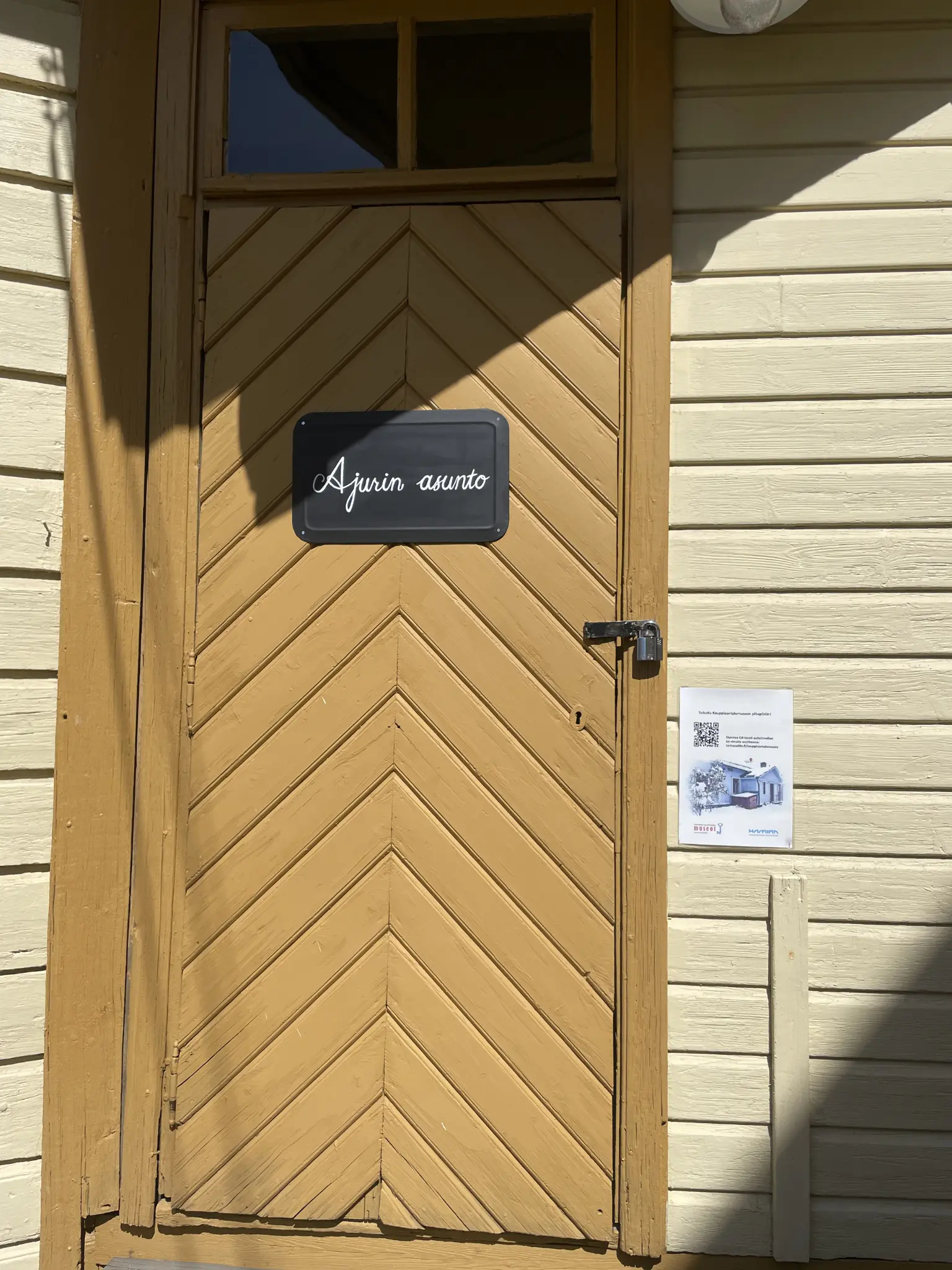
The Coachman’s Residence

The Coachman’s Residence
In larger courtyards, there was a caretaker who was usually a coachman by profession and also took care of the caretaker's duties. These included, among other things, fetching water from the city's public wells for the residents, as urban courtyards typically did not have their own wells. Wells were possibly not constructed for hygiene reasons. The water was too deep for digging, and the outhouse, toilet, barn, and stable would have been too close to the well.
In addition to fetching water, coachmen had to be prepared to rush to the scene of a fire with their water barrels when a fire broke out. The barrel had to, of course, be full. The first one on the scene received a cash reward—so caretakers always kept their barrels full of water!
The fire risk was high in densely built wooden towns, as fire was needed every day for heating, cooking, and lighting before the introduction of gas and electricity. Hamina experienced three major fires in the 19th century, in the years 1821, 1840, and 1887, which is why there are not many buildings in the city that were constructed before the 19th century.
In the 20th century, the coachman’s residence served as a bakery, and the current partition wall did not yet exist. The large baking oven located in the room was in use during the bakery's time.

